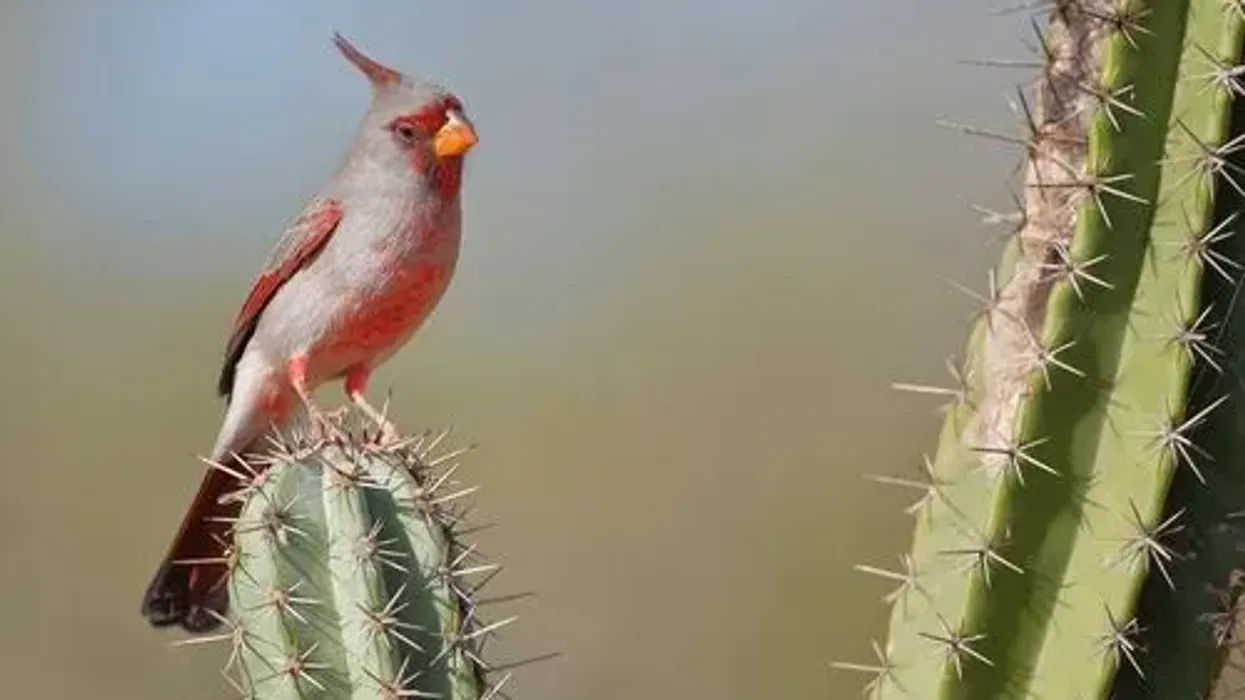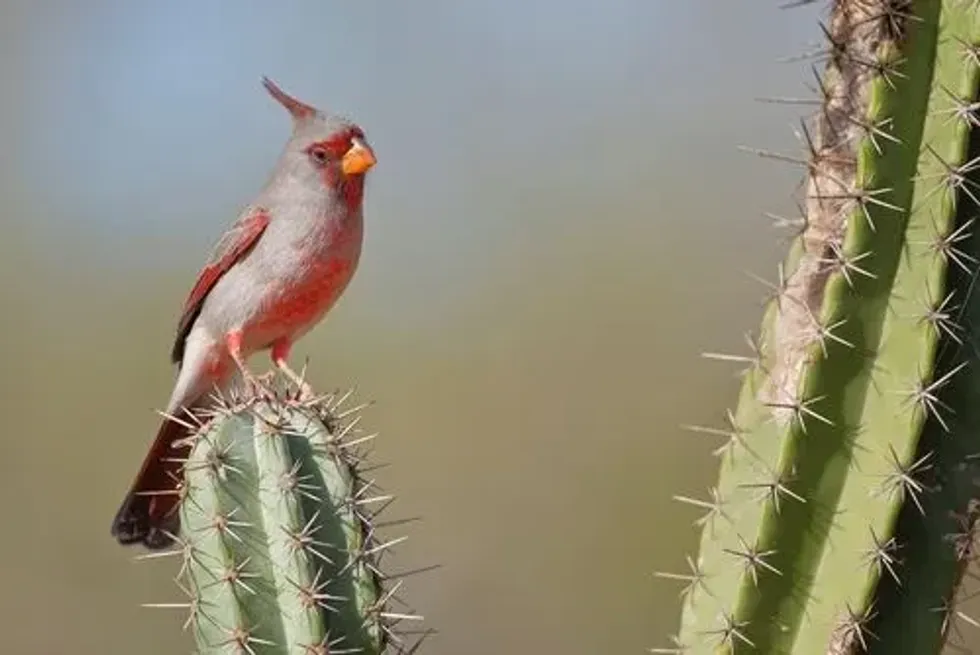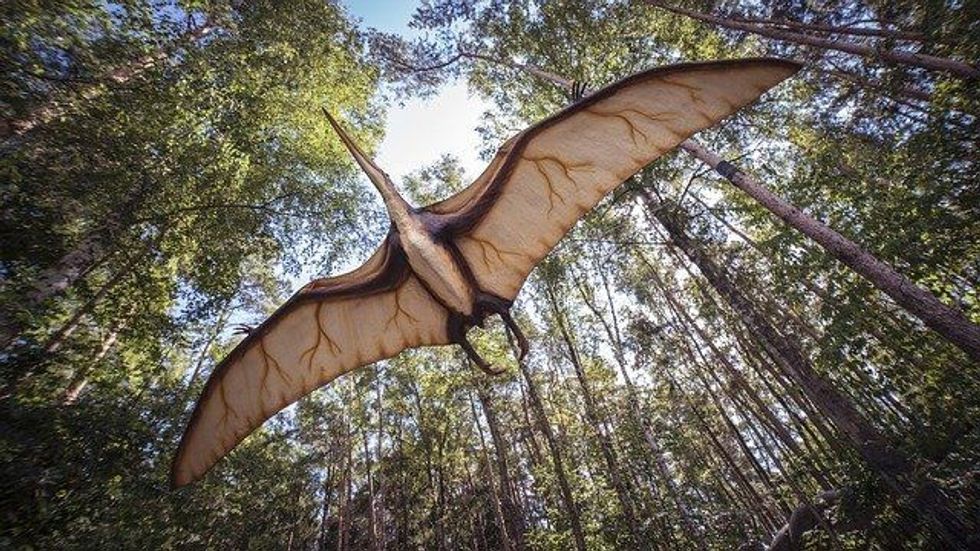Pyrrhuloxia, also known as desert cardinals, are singing birds that are sure to attract you with their soft tunes and unique colors.
They are often confused with northern cardinals, and this is quite understandable as they sound and look almost the same, except that the northern cardinal is bright red all over and the desert cardinal only has hints of red around its mostly gray body.
The pyrrhuloxia is found living in upland desert habitats, savannas, riparian woodlands, scrublands, and farm fields. These sites are their basic habitat locations and the bird is found in various regions of Mexico, Texas, Arizona, and the southwestern USA.
The basic food eaten by the pyrrhuloxia species includes large insects, fruits, crushed peanuts, cracked corn, safflower seeds, white milo, black oil sunflower seeds, and berries. These birds are seen foraging in flocks during the winter season.
This bird has a sleek crest and a rounded bill. Also, the plumage of these birds is usually gray in color with red highlights on their face and crest. The male pyrrhuloxia has a pale gray back and underparts and a red tail. The female bird has less red colorings and is duller in color.
The breeding season of pyrrhuloxia birds lasts between March and September. Once mating is complete, the female bird lays eggs. The average clutch size of these birds is about two to four eggs and the incubation period is 14 days long. The eggs are grayish to greenish-white in color and both parents take care of their eggs.
Here on our page, we have lots of interesting facts on the pyrrhuloxia that everyone will enjoy. Let's have a look at these interesting facts, and if you do like these, then do read our palm warbler and cardinal bird facts too.
Pyrrhuloxia Interesting Facts
What type of animal is a pyrrhuloxia?
Pyrrhuloxia (Cardinalis sinuatus) is the name of a species of birds, also known as desert cardinal birds. They are well-known birds of North America and these birds are mostly found in brushy areas of the southwestern U.S., Texas, and northern Mexico.
What class of animal does a pyrrhuloxia belong to?
The class of animal that a Pyrrhuloxia (northern cardinal) belongs to is Aves. This species of North American birds has a much longer, thinner crest and a more rounded bill shape than other Aves.
How many pyrrhuloxias are there in the world?
There are about three million breeding pyrrhuloxias in North America. In North America you are likely to witness thousands of pyrrhuloxias during winter. A considerable decline has been witnessed in the population of this species over the past few years due to habitat destruction.
Where does a pyrrhuloxia live?
The typical pyrrhuloxia range includes the brushy areas of the southwestern U.S., including Texas, Arizona, and New Mexico.
What is a pyrrhuloxia's habitat?
The typical habitat of these North American pyrrhuloxias is an upland desert, savannas, riparian woodlands, desert scrublands, or farm fields.
Who do pyrrhuloxias live with?
North American pyrrhuloxia birds tend to live with species of their own kind. They are also seen co-existing with some other species of birds as well.
How long does a pyrrhuloxia live?
The pyrrhuloxia (Cardinalis sinuatus) has a lifespan of about eight years. If held in captivity, they are capable of living longer.
How do they reproduce?
The pyrrhuloxia is monogamous, which means that one male mates with the one female during the breeding season. A male pyrrhuloxia attracts females by performing a unique call while making a fluttering noise with its wings and bowing its head.
They may also offer some food. Females are responsible for creating the nests, after which both the male and female protect the nest from intruders.
When they are convinced of their nest's safety, they will mate, and the female lays eggs in their nest.
About two to four eggs will be laid by the female and the incubation period lasts for about 14 days. The eggs are grayish to greenish-white in color and both parents take care of their eggs.
What is their conservation status?
According to the IUCN, the conservation status of the pyrrhuloxia bird is declared as Least Concern. Despite this, their habitat has been destroyed due to urbanization and the expansion of agricultural lands and this has resulted in a sharp decline in their population over the last decade.
Pyrrhuloxia Fun Facts
What do pyrrhuloxias look like?
This species of North American birds has a long, thin crest and a rounded bill. Also, the plumage of these birds is usually gray in color with red highlights on their face, chest, belly, wings, and tail.
Males and females of this species differ in appearance. A pyrrhuloxia male has a red-tipped gray crest, a gray head, and a red tail, whereas a female bird is gray with fewer red areas around its body (female pyrrhuloxia birds look a lot like small gray cardinals).

* Please note that this is an image of a cardinal bird, not a pyrrhuloxia bird specifically. If you have any image of a pyrrhuloxia bird please let us know at hello@kidadl.com.
How cute are they?
The pyrrhuloxia bird (Cardinalis sinuatus) is definitely a cute and attractive bird, with red accents all over its gray body. This combination of colors makes it a unique bird in the wild.
How do they communicate?
The pyrrhuloxia communicates using songs and calls. They sing in the form of soft whistles and they perform these songs while marking their territory or defending their nests. Their songs are pretty similar to northern cardinal songs and their calls include chips and cheeks like the northern cardinal, which they make during foraging or in flight.
How big is a pyrrhuloxia?
A pyrrhuloxia bird grows up to 7-8 in (17.78-20.32 cm) in length and 5-6 in (12.7-15.24 cm) in height. Pyrrhuloxias are about three times bigger than a rat.
How fast can a pyrrhuloxia fly?
This cardinal can fly about 25 mph (40 kph).
How much does a pyrrhuloxia weigh?
Pyrrhuloxias weigh about 0.07 lb (32 g).
What are their male and female names of the species?
They do not have gender-specific names.
What would you call a baby pyrrhuloxia?
Pyrrhuloxias give birth to baby pyrrhuloxias after breeding, called 'chicks' or 'nestlings'.
What do they eat?
The pyrrhuloxia species eats large insects, fruits, crushed peanuts, cracked corn, safflower seeds, black oil sunflower seeds, white milo, and berries.
Are they dangerous?
These North American birds are territorial in nature and may attack other birds who enter their territory. However, they do not pose any threats to humans.
Would they make a good pet?
In most countries, it is illegal to keep any cardinals in captivity. These wild birds are best left in the wild where they will prosper better, soaring in the sky and thriving in the wilderness. They are kept in captivity only by licensed wildlife authorities.
Did you know...
The difference between most cardinals and pyrrhuloxias is that cardinals have orange wedge-shaped beaks, whereas a pyrrhuloxia has a light yellow bill.
The state of Arizona is home to various species of cardinals, including northern cardinals and desert cardinals.
Pyrrhuloxias, when compared to northern cardinals, are capable of living in drier conditions.
What is the difference between pyrrhuloxia and cardinals?
The pyrrhuloxia cardinal hybrid is similar to cardinals in many ways. The main difference between the two is that cardinals have orange wedge-shaped beaks, whereas pyrrhuloxia birds have a light yellow bill.
How to pronounce pyrrhuloxia
Pyrrhuloxia pronunciation is 'peeero-lox-sia'.
Here at Kidadl, we have carefully created lots of interesting family-friendly animal facts for everyone to discover! Learn more about some other birds, including the common blackbird or the laughing gull.
You can even occupy yourself at home by drawing one on our pyrrhuloxia coloring pages.










